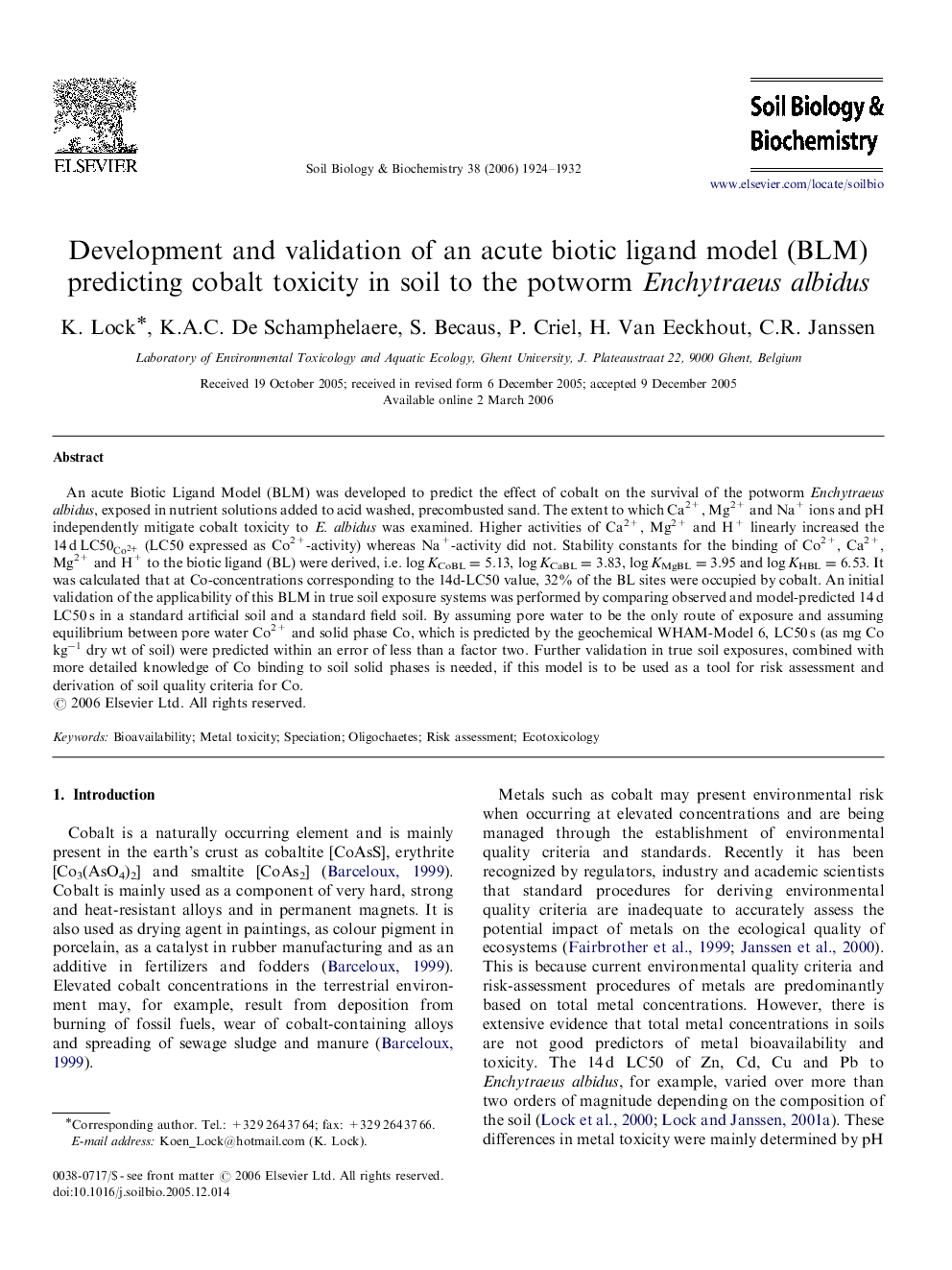| Article ID | Journal | Published Year | Pages | File Type |
|---|---|---|---|---|
| 2026595 | Soil Biology and Biochemistry | 2006 | 9 Pages |
An acute Biotic Ligand Model (BLM) was developed to predict the effect of cobalt on the survival of the potworm Enchytraeus albidus, exposed in nutrient solutions added to acid washed, precombusted sand. The extent to which Ca2+, Mg2+ and Na+ ions and pH independently mitigate cobalt toxicity to E. albidus was examined. Higher activities of Ca2+, Mg2+ and H+ linearly increased the 14 d LC50Co2+50Co2+ (LC50 expressed as Co2+-activity) whereas Na+-activity did not. Stability constants for the binding of Co2+, Ca2+, Mg2+ and H+ to the biotic ligand (BL) were derived, i.e. log KCoBL=5.13, log KCaBL=3.83, log KMgBL=3.95 and log KHBL=6.53. It was calculated that at Co-concentrations corresponding to the 14d-LC50 value, 32% of the BL sites were occupied by cobalt. An initial validation of the applicability of this BLM in true soil exposure systems was performed by comparing observed and model-predicted 14 d LC50 s in a standard artificial soil and a standard field soil. By assuming pore water to be the only route of exposure and assuming equilibrium between pore water Co2+ and solid phase Co, which is predicted by the geochemical WHAM-Model 6, LC50 s (as mg Co kg−1 dry wt of soil) were predicted within an error of less than a factor two. Further validation in true soil exposures, combined with more detailed knowledge of Co binding to soil solid phases is needed, if this model is to be used as a tool for risk assessment and derivation of soil quality criteria for Co.
